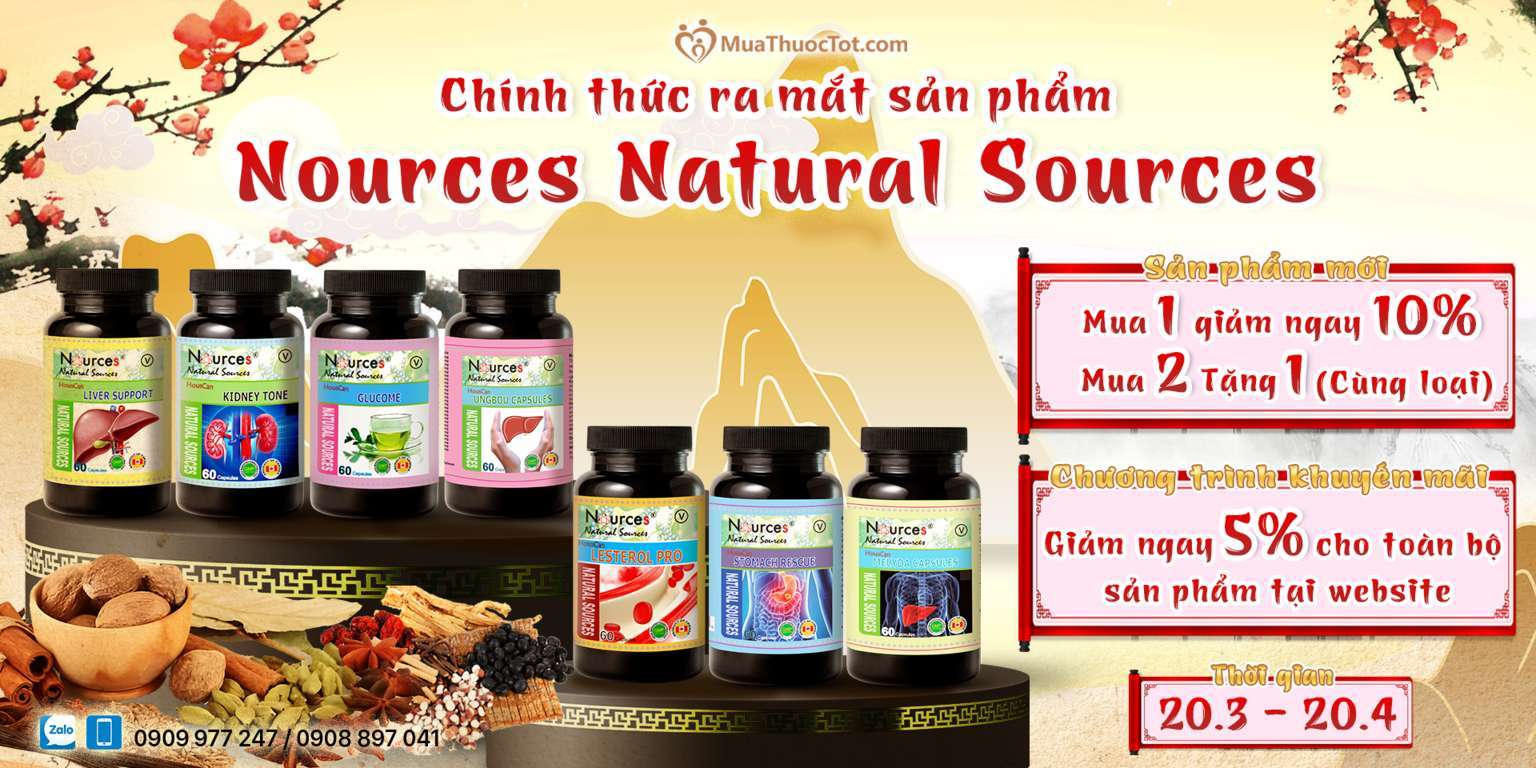-
 Thanh toán đa dạng, linh hoạtChuyển khoản ngân hàng, thanh toán tại nhà...
Thanh toán đa dạng, linh hoạtChuyển khoản ngân hàng, thanh toán tại nhà... -
 Miễn Phí vận chuyển 53 tỉnh thànhMiễn phí vận chuyển đối với đơn hàng trên 1 triệu
Miễn Phí vận chuyển 53 tỉnh thànhMiễn phí vận chuyển đối với đơn hàng trên 1 triệu -
 Yên Tâm mua sắmHoàn tiền trong vòng 7 ngày...
Yên Tâm mua sắmHoàn tiền trong vòng 7 ngày...
Anti-aging Drugs: From Basic Research to Clinical Practice (Drug Discovery, Volume 57)
-

- Mã sản phẩm: 178262435X
- (1 nhận xét)

- Publisher:Royal Society of Chemistry; 1st edition (February 1, 2017)
- Language:English
- Hardcover:591 pages
- ISBN-10:178262435X
- ISBN-13:978-1782624356
- Item Weight:2.27 pounds
- Dimensions:6.25 x 1.5 x 9.5 inches
- Best Sellers Rank:#6,312,475 in Books (See Top 100 in Books) #1,701 in Pharmacy (Books) #2,157 in Pharmacology (Books) #3,809 in Pharmacies
- Customer Reviews:4.0 out of 5 stars 1Review

Tính năng sản phẩm
• Highlight, take notes, and search in the book• In this edition, page numbers are just like the physical editionMô tả sản phẩm
Review
This book would be of interest to a broad audience of scientists who investi-gate mechanisms underlying biological aging and age-related pathologies, medicinal chemists who implement knowledge of these mechanisms into the development of pharmacological geroprotectors for extending human lifespan and healthspan, clinicians who use these geroprotectors to treat various age-related diseases, and medical and university students who study in these fields of research and medical practice. The book would provide fundamental knowledge and thought-provoking new idea in all these fields of research and medical practice. -- Professor Vladimir Titorenko, Concordia University, Canada ― DOI: 10.1002/cmdc.201700585
Product Description
This book provides an overview of current research aimed to search for life-extending medicines and describes pharmacological aspects of anti-aging medicine. Readers are introduced to the fascinating historical background of geroprotection in the first chapter. In-depth information on models for investigating geroprotective drugs precedes a section covering anti-aging properties of pharmaceutical compounds, such as calorie restriction mimetics, autophagy inducers, senolytics and mitochondrial antioxidants. Finally, strategies to translate discoveries from aging research into drugs and healthcare policy perspectives on anti-aging medicine are provided to give a complete picture of the field. A timely and carefully edited collection of chapters by leading researchers in the field, this book is a fascinating and useful resource for pharmaceutical scientists, gerontologists and any scientifically interested person wishing to know more about the current status of research into anti-aging remedies, challenges and opportunities.
From the Inside Flap
Aging is a natural phenomenon that is peculiar to all living things. However, accumulating findings indicate that senescence could be postponed or prevented by certain approaches. Substantial evidence has emerged supporting the possibility of radical human health and lifespan extension, in particular through pharmacological modulation of aging. A number of natural dietary ingredients and synthetic drugs have been assumed to have geroprotective potential. In the development of anti-aging therapeutics, several cell, insect, and animal models may provide useful starting points prior to human studies.
This book provides an overview of current research aimed to search for life-extending medicines and describes pharmacological aspects of anti-aging medicine. Readers are introduced to the fascinating historical background of geroprotection in the first chapter. In-depth information on models for investigating geroprotective drugs precedes a section covering anti-aging properties of pharmaceutical compounds, such as calorie restriction mimetics, autophagy inducers, senolytics and mitochondrial antioxidants. Finally, strategies to translate discoveries from aging research into drugs and healthcare policy perspectives on anti-aging medicine are provided to give a complete picture of the field.
A timely and carefully edited collection of chapters by leading researchers in the field, this book will be a fascinating and useful resource for pharmaceutical scientists, gerontologists and any scientifically interested person wishing to know more about the current status of research into anti-aging remedies, challenges and opportunities.
From the Back Cover
Aging is a natural phenomenon that is peculiar to all living things. However, accumulating findings indicate that senescence could be postponed or prevented by certain approaches. Substantial evidence has emerged supporting the possibility of radical human health and lifespan extension, in particular through pharmacological modulation of aging. A number of natural dietary ingredients and synthetic drugs have been assumed to have geroprotective potential. In the development of anti-aging therapeutics, several cell, insect, and animal models may provide useful starting points prior to human studies.
This book provides an overview of current research aimed to search for life-extending medicines and describes pharmacological aspects of anti-aging medicine. Readers are introduced to the fascinating historical background of geroprotection in the first chapter. In-depth information on models for investigating geroprotective drugs precedes a section covering anti-aging properties of pharmaceutical compounds, such as calorie restriction mimetics, autophagy inducers, senolytics and mitochondrial antioxidants. Finally, strategies to translate discoveries from aging research into drugs and healthcare policy perspectives on anti-aging medicine are provided to give a complete picture of the field.
A timely and carefully edited collection of chapters by leading researchers in the field, this book will be a fascinating and useful resource for pharmaceutical scientists, gerontologists and any scientifically interested person wishing to know more about the current status of research into anti-aging remedies, challenges and opportunities.
About the Author
Alexander Vaiserman was born in KIev, Ukraine, in 1957. He earned his MSc Degree in cytology and developmental biology from Kiev State University in 1984, and his DSc degrees in normal physiology from Instiute of Gerontology (Kiev, Ukraine) in 1991 and 2004, respectively. Since 1978, he has had a permanent position in the Instiute of Gerontology (Kiev, Ukraine). Since 2010, he has been the head of the Laboratory of Epigenetics in the Instiute of Gerontology (Kiev, Ukraine). His research interests comprise epigenetics, epidemiology and experimental gerontology.
Excerpt. © Reprinted by permission. All rights reserved.
Anti-aging Drugs
From Basic Research To Clinical Practice
By Alexander M. VaisermanThe Royal Society of Chemistry
Copyright © 2017 The Royal Society of ChemistryAll rights reserved.
ISBN: 978-1-78262-435-6
Contents
Section I: Overview,CHAPTER 1 Anti-Aging Drugs: Where are We and Where are We Going? Alexander M. Vaiserman and Oleh V. Lushchak,
CHAPTER 2 Aging: Natural or Disease? A View from Medical Textbooks S. Janac, B. Clarke and D. Gems,
CHAPTER 3 The Search for the "Anti-Aging Pill": A Critical Viewpoint Éric le Bourg,
Section II: Basic Concepts, Models and Approaches,
CHAPTER 4 Testing of Geroprotectors in Experiments on Cell Cultures: Pros and Cons Alexander N. Khokhlov and Galina V. Morgunova,
CHAPTER 5 Pharmacogenomics and Epigenomics of Age-Related Neurodegenerative Disorders: Strategies for Drug Development Ramón Cacabelos, Juan Carlos Carril and Oscar Teijido,
CHAPTER 6 Nanotechnology in Anti-Aging: Nutraceutical Delivery and Related Applications Anila Mathew, Francesco Marotta and D. Sakthi Kumar,
CHAPTER 7 Hormetins as Drugs for Healthy Aging Suresh I. S. Rattan,
Section III: Antioxidants,
CHAPTER 8 Antioxidant Therapy of Aging: From Free Radical Chemistry to Systems Theory of Reliability V. K. Koltover,
CHAPTER 9 Mitochondria-Targeted Rechargeable Antioxidants as Potential Anti-Aging Drugs Elena G. Pasyukova, Boris A. Feniouk and Vladimir P. Skulachev,
Section IV: Mimicking Caloric Restriction,
CHAPTER 10 Mimetics of Caloric Restriction Oleh Lushchak and Dmytro Gospodaryov,
CHAPTER 11 Allosteric SIRT1 Activators as Putative Anti-Aging Drugs Basil P. Hubbard,
CHAPTER 12 Therapeutic Potential of Sirtuin Inhibitors in Cancer Francisco Javier Alcain, Consuelo M. Nieva, Lucía Fernández del Río, Raquel Santiago-Mora, Elena Gutiérrez-Casado, Mario Duran-Prado and Jose M. Villalba,
CHAPTER 13 Lifespan-Extending Effect of Resveratrol and Other Phytochemicals Shin-Hae Lee and Kyung-Jin Min,
CHAPTER 14 Extending Lifespan by Inhibiting the Mechanistic Target of Rapamycin (mTOR) Dudley W. Lamming,
CHAPTER 15 mTOR, Aging and Cancer: Prospects for Pharmacological Interventions Z. D. Sharp,
CHAPTER 16 Anti-Aging Action of PPARs: Potential Therapeutic Targets Ki Wung Chung, Byung Pal Yu and Hae Young Chung,
CHAPTER 17 Antidiabetic Biguanides as Anti-Aging Drugs Vladimir N. Anisimov,
Section V: Other Pharmacological Approaches,
CHAPTER 18 S-Adenosylmethionine Metabolism: A Promising Avenue in Anti-Aging Medicine? W. A. M. Loenen,
CHAPTER 19 Melatonin as a Geroprotector: Healthy Aging vs. Extension of Lifespan R. Hardeland,
CHAPTER 20 Short Peptides Regulate Gene Expression, Protein Synthesis and Enhance Life Span Vladimir Khavinson and Irina Popovich,
CHAPTER 21 HDAC Inhibitors: A New Avenue in Anti-Aging Medicine E. G. Pasyukova and A. M. Vaiserman,
Section VI: Social Context,
CHAPTER 22 Human Life Extension: Opportunities, Challenges, and Implications for Public Health Policy Ilia Stambler,
Subject Index,
CHAPTER 1
Anti-Aging Drugs: Where are We and Where are We Going?
ALEXANDER M. VAISERMAN AND OLEH V. LUSHCHAK
1.1 Introduction
Human longevity dramatically increased during the last century when implementation of vaccinations, disinfectants and antibiotics led to a substantial reduction of infectious diseases as a leading cause of death. The decline in mortality among the elderly has continued over the past few decades. It is most probably owing to preventative factors, such as improved diets, as well as exercise and reduction in smoking. If current demographic trends continue then 20% percent of the global population of 9 billion will be over the age of 60 by 2050. As a consequence, most modern nations are undergoing rapid population aging. Although the life expectancy has enhanced dramatically in modern generations, this process has, nevertheless, not been accompanied by an equivalent increase in healthy life expectancy. Since aging is a primary risk factor in most chronic disorders, the prevalence of age-associated disorders, such as type 2 diabetes, neurodegenerative disease, cardiovascular disease, osteoporosis and cancer, rises considerably with the increasing average age in populations of developed countries, representing a great socio-economic challenge. It is estimated that there will be more than 30 million people over the age of 80 will be in the U.S. by 2050; about half of them will suffer from different forms of dementia, and at least 3 million of all adults will be diagnosed with Parkinson's disease. The expected prevalence of age-associated conditions will have substantial consequences for future society, including increased financial and psychological burdens for families and greater pressure on government health care programs and entitlement budgets. The demographic trend consisting of an increasing proportion of aged people in the populations of developed countries likely explains the dramatic increase in the interest of the lay public and country leaders in research in the field of biogerontology.
1.2 Human Life Extension: Concerns and Considerations
Investigations aimed at human life extension have traditionally raised concerns that it can lead to the growth of the older population segment and, consequently, to the high prevalence of ageing-associated chronic pathologies. Numerous experimental studies have, however, demonstrated that life extension is usually accompanied by delayed or reduced morbidity, including cardiovascular disease, neurodegeneration, and tumors. There is also increasing evidence from epidemiological studies, which is consistent with the findings from animal models. For example, centenarians, in particular those who live in so-called 'Blue Zones' (five regions in Europe, Latin America, Asia and the US with unusually high concentrations of centenarians), have been not only shown to exhibit exceptional longevity but also often remain free from disability and chronic diseases until very advanced age.
The compression of morbidity has been the primary strategy in gerontology and geriatric research during the last few decades. This strategy claims that we may limit morbidity to a shorter period closer to the natural ending of life, thus reducing the burden of illness and disability by delaying the age at onset of major age-associated chronic disorders. Geroscience, a novel branch of geriatric medicine, is centered on healthspan extension. Extension of healthspan is a crucial component of achieving 'optimal longevity', defined as living long, but with good health and quality of life, including improved functioning, productivity and independence. Attempts to increase healthspan are currently focused on slowing the basic biological processes accompanying aging, such as mitochondrial dysfunction, cellular senescence, age-related decline of stress resistance, dysregulated cellular energy sensing and growth pathways, impaired proteostasis, deteriorated stem cell function/bioavailability, as well as oxidative and inflammation stress. All these processes interfere with the normal physiological cellular signaling pathways, demanding compensatory adjustments with aging to maintain homeostasis. At a certain age, however, these compensatory mechanisms become exhausted and different aspects of aging are manifested, thereby increasing the risk for functional decline and the onset and progression of chronic diseases. Therapeutic strategies to combat aging and age-related diseases are a part of an investigation field commonly referred to as 'anti-aging medicine'. Anti-aging medicine has emerged as a new specialization in medical practice at the beginning of the 1990s. Over the past few years, it has become an increasingly discussed and debated topic. Its main purpose is to prolong both healthspan and lifespan by specific regimes of exercise and dieting, as well as by advanced biomedical interventions aimed at slowing, stopping or reversing the aging process.
Traditionally, the process of aging is believed to be 'natural' and therefore inevitable. However, in the view of many authors, the idea that aging is an indefeasible part of human nature is quite questionable. In accordance with many modern evolutionary theories, aging has emerged as a by-product of evolutionary processes and does not have a specific function. If aging is really not an intrinsic, irrevocable component of life, then it could be manipulated similarly to other processes that are generally deemed to be unnatural or pathological. The major assumption underlying anti-aging research is that age-associated senescence may be regarded as a pathophysiological phenomenon that might be prevented or even reversed. Modern anti-aging medicine promotes biomedical technologies and approaches that have the potential to delay or postpone aging processes. The success obtained in this research field is greatly attributed to the increasingly broad application of omics-based approaches, such as genomics, transcriptomics, proteomics and metabolomics. Through the implementation of these technologies, a better understanding has been achieved regarding the key molecular and cellular pathways involved in the aging process, including inflammation, proteostasis, autophagy, mitochondrial efficiency and nutrient signaling, and regarding the most effective interventions to counteract age-related senescence. The impetuous progress in highlighting the mechanisms underlying aging and longevity and first successful pharmacological interventions to extend healthy lifespan in different model organisms indicate that the aging process is malleable.
1.3 Anti-Aging Pharmacology: Promises and Pitfalls
The development of pharmacological agents targeting aging-related functional declines and pathological manifestations ('anti-aging drugs') is now in the spotlight in geroscience. An exponential growth of research in the field of geriatric pharmacology, including the study of prospective anti-aging drugs, has been observed over the past 20 years. The first step in the process of drug development is known to involve the selection of druggable targets. The situation when gene targets are determined by the study of genetic variations linked to either gain-of-function or loss-of-function phenotypes is especially useful because these targets can be considered as those that have been reliably validated. Over the last two decades, a number of genetic pathways have been identified that play an unequivocal role in control of the aging process and longevity; all these genes represent attractive drug targets. Currently, many pharmacological agents targeting the putative mechanisms of aging are under development.
Taking into account the extraordinary complexity of the mechanistic pathways underlying the aging process, the recognition of these pathways and development of anti-aging interventions seems a challenging task. Significant progress has, however, been achieved in the last few years in this research field. A number of pharmacological agents with the potential to target particular aging-associated pathways and to produce protective responses against age-related pathologies are currently under investigation. In recent years, several classes of bioactive chemical agents and nutraceuticals have been shown to have potential therapeutic efficacy in anti-aging medicine. In experimental studies, many substances have been identified as having life-extending properties. Among them are calorie restriction mimetics, such as resveratrol, rapamycin and metformin, antioxidants (vitamins A, C and E, quercetin, melatonin, coenzyme Q10, etc.), autophagy inductors, such as spermidine, senolytics, phytochemicals, e.g., curcumin, genistein, catechins and epigallocatechin gallate (EGCG), and several other natural and chemical compounds. In recent years, modern biotechnological approaches have been used for developing novel anti-aging pharmaceutical applications. For example, the coupling of curcumin-based nanoparticles with the Tet-1 peptide, which has affinity for neurons and possess retrograde transportation properties, as well as mitochondria-targeted antioxidant SkQ1, have been recently explored as promising therapeutic applications for the treatment of Alzheimer's disease. Over the last decade, consistent evidence has also been reported for the role of epigenetic factors, including DNA methylation, histone modifications and microRNA regulation, in the aging process as well as in the pathogenesis and progression of age-related diseases. A lot of hope is being pinned, therefore, on pharmacological agents targeted to the epigenetic regulation of gene activity, such as inhibitors of DNA methyltransferases and histone deacetylases, including sodium butyrate, trichostatin A, sodium 4-phenylbutyrate and suberoylanilide hydroxamic acid.
It should, however, be noted that all agents that can be classified as potent anti-aging therapeutic compounds are multi-functional and targeted at multiple signaling pathways mediating aging. Moreover, the evidence remains limited regarding the overall health benefits of these substances, including epidemiological studies exploring the consequences of their long-term intake for human health. Furthermore, there is evidence that uncontrolled intake of some anti-aging agents can be useless or even harmful. For example, the consumption of antioxidants is considered as quite reasonable by many researchers, especially in the cardiovascular research area. The appropriateness of antioxidant intake, however, still remains a matter of debate. Meta-analysis of observational studies and randomized controlled trials conducted in well-nourished and healthy populations demonstrated that antioxidant supplementation may be associated with undesirable consequences for health and all-cause mortality. Another example is the fact that supplementation with several promising pro-healthspan compounds can in some cases trigger insulin resistance. This applies to substances such as rapamycin and statins. Therefore, people should use them with caution and only with careful medical monitoring.
Another method of anti-aging drug discovery is evaluating the pharmacological agents already approved by the FDA and other regulatory agencies for treatment of particular conditions associated with aging, such as statins, metformin, beta-blockers, reninangiotensin-aldosterone system inhibitors, thiazolidinediones, and anti-inflammatory medications. These classes of drugs are commonly used in the treatment of patients with various chronic medical conditions and their efficacy and safety have been proven in many clinical trials. They have also been shown to improve health, physiological functioning and well-being in middle to old age patients with chronic disorders. Such agents are presently not used in the treatment of age-associated physiological dysfunctions in the absence of clinical manifestation of disease. However, these medications might theoretically be redirected to treating or preventing conditions or syndromes typically associated with aging.
Le Couteur et al. noted in their review that 'despite the potential profits and the extraordinary capacity of drug discovery technology, there is a paucity of new drugs in the development pipeline, particularly for those medications that are likely to be highly profitable because they are used long term and by a large proportion of the population.' The longevity dividend, i.e. an idea that extending healthy life by slowing aging is the most efficient way to combat the fatal and disabling pathologies that plague us today, may provide an opportunity to revitalize the drug development pipeline. Indeed, by delaying the aging process per se, it likely would be possible to prevent or delay all age-associated pathologies rather than to overcome them one by one, which is the current approach of the disease-based paradigm in drug development. Furthermore, prevention of a particular age-related chronic disorder, e.g., cardiovascular disease, will apparently have only a modest effect on the population life expectancy because comorbidity, e.g., cancer, will to a great extent substitute the reduction in mortality risk caused by preventing the targeted pathology. The main idea of geroscience is that preventing the clinical manifestations of all age-related diseases as a group by inhibiting the basic aging mechanisms can be far more effective than preventing the individual chronic disorders. A recent analysis conducted by Goldman et al. demonstrated that substantial socio-economic benefits might be derived from this approach in comparison with current public health strategy targeted to prevention of particular disorders. According to this analysis, the economic impact of delaying aging and increasing healthspan in the US is estimated at ~7 trillion dollars over the next fifty years. Hence, it is obvious that discovery of new drug targets based on biogerontological research represents an incredible opportunity for the pharmaceutical and healthcare industries. Currently, the consensus among physicians and health professionals that the optimization of physiological and mental functioning throughout the life course should be a major emphasis of any contemporaneous biomedical policy addressing global aging. A healthy lifestyle comprising proper nutrition and physical activity represents the first-line function-preserving strategy. Pharmacological compounds, both existing and potential, can serve as a prospective complementary approach.
1.4 Concluding Remarks and Future Directions
To summarize, it can be assumed that targeting aging per se can be a more effective approach to postponing or preventing age-related disorders than treatments targeted to specific pathological conditions. Because of the aging population, such a therapeutic strategy is undoubtedly an area of increasing relevance for the pharmaceutical industry and public health organizations. As has been recently emphasized by Longo et al., 'the time has come not only to consider several therapeutic options for the treatment of age-related comorbidities, but to initiate clinical trials with the ultimate goal of increasing the healthspan (and perhaps longevity) of human populations, while respecting the guiding principle of physicians primum non nocere.' In modern pharmacy, anti-aging is likely one of the most prospective markets because the target group can potentially include each person. Several supplements, such as resveratrol, are already advertised in the pharmaceutical market as "anti-aging pills". Very promising in this regard is rapamycin (also known as sirolimus), which is already approved by the FDA as an antibiotic and immunosuppressant drug. Current marketing research demonstrates that most people are willing to pay for long-term pharmacological therapy to prevent or delay the aging-related decline in physical and mental functions. Recent sociological surveys show a great desire for extended life and health in the US and worldwide. In most of the surveys conducted until now, the cautious attitude to life extension was a consequence of an erroneous equation of extended life with a prolonged period of age-related functional decline and frailty. When continued health was stipulated in the questionnaire design, responses significantly favored longer life. In the survey by Donner et al., 20% of respondents wished to die at the age of 85, whereas 42% wanted to have an unlimited lifespan. Despite the widespread misconception that implementation of anti-aging medicine would increase the proportion of chronic patients in modern societies, it in fact would lead to reducing the ratio of unhealthy to healthy population since it would result in delaying the onset of age-related pathological conditions. In other words, it may lead to a decrease of biological age (i.e., old individuals will become biologically younger) and to an increase of the age of disability, thereby increasing the retirement age and enhancing revenues without enhancing taxes. Optimistic predictions of the feasibility of health- and life-extending interventions, however, should certainly be critically discussed in terms of their ethical, economic and social implications. Only after in-depth examination and following comprehensive debates will the implementation of such approaches in clinical practice be possible.
(Continues...)Excerpted from Anti-aging Drugs by Alexander M. Vaiserman. Copyright © 2017 The Royal Society of Chemistry. Excerpted by permission of The Royal Society of Chemistry.
All rights reserved. No part of this excerpt may be reproduced or reprinted without permission in writing from the publisher.
Excerpts are provided by Dial-A-Book Inc. solely for the personal use of visitors to this web site.
- Mua astaxanthin uống có tốt không? Mua ở đâu? 29/10/2018
- Saffron (nhụy hoa nghệ tây) uống như thế nào cho hợp lý? 29/09/2018
- Saffron (nghệ tây) làm đẹp như thế nào? 28/09/2018
- Giải đáp những thắc mắc về viên uống sinh lý Fuji Sumo 14/09/2018
- Công dụng tuyệt vời từ tinh chất tỏi với sức khỏe 12/09/2018
- Mua collagen 82X chính hãng ở đâu? 26/07/2018
- NueGlow mua ở đâu giá chính hãng bao nhiêu? 04/07/2018
- Fucoidan Chính hãng Nhật Bản giá bao nhiêu? 18/05/2018
- Top 5 loại thuốc trị sẹo tốt nhất, hiệu quả với cả sẹo lâu năm 20/03/2018
- Footer chi tiết bài viết 09/03/2018
- Mã vạch không thể phân biệt hàng chính hãng hay hàng giả 10/05/2023
- Thuốc trắng da Ivory Caps chính hãng giá bao nhiêu? Mua ở đâu? 08/12/2022
- Nên thoa kem trắng da body vào lúc nào để đạt hiệu quả cao? 07/12/2022
- Tiêm trắng da toàn thân giá bao nhiêu? Có an toàn không? 06/12/2022
- Top 3 kem dưỡng trắng da được ưa chuộng nhất hiện nay 05/12/2022
- Uống vitamin C có trắng da không? Nên uống như thế nào? 03/12/2022
- [email protected]
- Hotline: 0909977247
- Hotline: 0908897041
- 8h - 17h Từ Thứ 2 - Thứ 7
Đăng ký nhận thông tin qua email để nhận được hàng triệu ưu đãi từ Muathuoctot.com
Tạp chí sức khỏe làm đẹp, Kem chống nắng nào tốt nhất hiện nay Thuoc giam can an toan hiện nay, thuoc collagen, thuoc Dong trung ha thao , thuoc giam can LIC, thuoc shark cartilage thuoc collagen youtheory dau ca omega 3 tot nhat, dong trung ha thao aloha cua my, kem tri seo hieu qua, C ollagen shiseido enriched, và collagen shiseido dạng viên , Collagen de happy ngăn chặn quá trình lão hóa, mua hang tren thuoc virility pills vp-rx tri roi loan cuong duong, vitamin e 400, dieu tri bang thuoc fucoidan, kem chống nhăn vùng mắt, dịch vụ giao hang nhanh nội thành, crest 3d white, fine pure collagen, nên mua collagen shiseido ở đâu, làm sáng mắt, dịch vụ cho thue kho lẻ tại tphcm, thực phẩm tăng cường sinh lý nam, thuoc prenatal bổ sung dinh dưỡng, kem đánh răng crest 3d white, hỗ trợ điều trị tim mạch, thuốc trắng da hiệu quả giúp phục hồi da. thuốc mọc tóc biotin






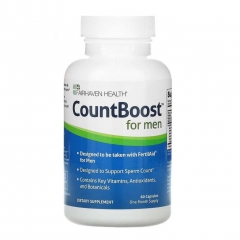
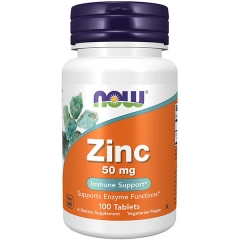
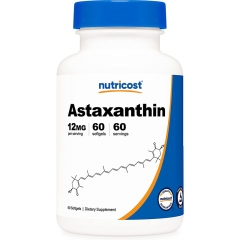
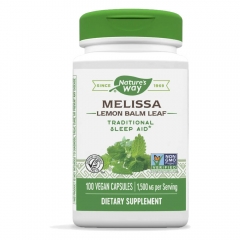
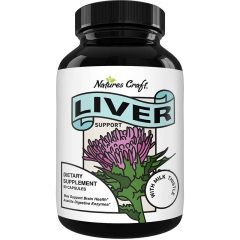
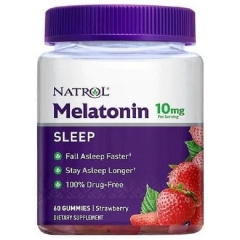
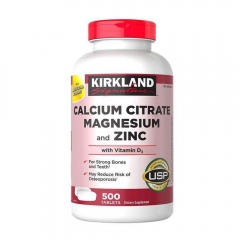

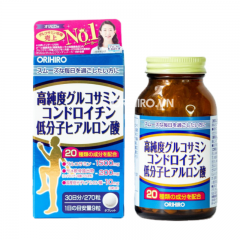

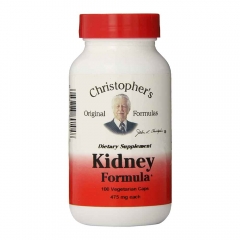

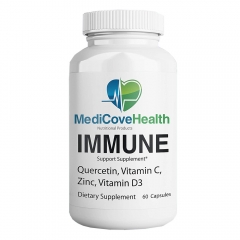




 KHUYẾN MÃI LỚN
KHUYẾN MÃI LỚN Hỗ Trợ Xương Khớp
Hỗ Trợ Xương Khớp Bổ Não & Tăng cường Trí Nhớ
Bổ Não & Tăng cường Trí Nhớ Bổ Sung Collagen & Làm Đẹp
Bổ Sung Collagen & Làm Đẹp Bổ Thận, Mát Gan & Giải Độc
Bổ Thận, Mát Gan & Giải Độc Chăm Sóc Sức khỏe Nam Giới
Chăm Sóc Sức khỏe Nam Giới Chăm Sóc Sức khỏe Nữ Giới
Chăm Sóc Sức khỏe Nữ Giới Chăm sóc Sức khỏe Trẻ Em
Chăm sóc Sức khỏe Trẻ Em Thực Phẩm Giảm Cân, Ăn Kiêng
Thực Phẩm Giảm Cân, Ăn Kiêng Bổ Sung Vitamin & Khoáng Chất
Bổ Sung Vitamin & Khoáng Chất Bổ Tim Mạch, Huyết Áp & Mỡ Máu
Bổ Tim Mạch, Huyết Áp & Mỡ Máu Bổ Mắt & Tăng cường Thị lực
Bổ Mắt & Tăng cường Thị lực Điều Trị Tai Mũi Họng
Điều Trị Tai Mũi Họng Sức Khỏe Hệ Tiêu hóa
Sức Khỏe Hệ Tiêu hóa Chăm Sóc Răng Miệng
Chăm Sóc Răng Miệng Chống Oxy Hóa & Tảo Biển.
Chống Oxy Hóa & Tảo Biển.